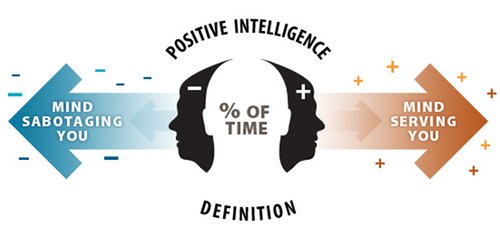
Intuition or Data: Which Leads to Better Innovation Decisions?
“We need more data.”
How many times have you heard this? How many times have you rolled your eyes (physically or mentally) and then patiently tried to explain that, when you’re doing something NEW, there is NO DATA.
There are analogous innovations, things that are similar in some ways that can be used as benchmarks, but nothing exactly like what you’re creating because nothing like it has existed before within your company.
As Innovators, we constantly balance our need for and comfort with gut decisions so we can move forward at speed with the broader organization’s need for data and certainty as a way to minimize risk.
But what role should intuition and data play in the early days of innovation?
This is exactly the question that my friend and former colleague, Nick Pineda, sought to answer in his thesis, “Are relevant experience and intuition drivers of success for innovation decision-makers? An interview-based approach”
Robyn: Hi Nick! Thanks for taking the time to speak with me today. The topic you explore in your thesis is fascinating and something every innovator struggles with. I’m curious, what led you to decide to explore it?
Nick: Interestingly, the process of deciding what to write my thesis on actually inspired the topic itself.
For the capstone of my Masters program, we were told to do a consulting project but I had spent so many years in consulting that I wasn’t terribly excited about that prospect. One day, as I was walking to work, I felt this feeling in my gut that said, “Nick, this is not why you’re in the Masters program.” I shared this feeling with my professor and faculty advisor, and they were open to a different approach.
As we discussed what I could do, the same topic kept coming up – a lot of what is published about innovation, especially with Agile, is about measurement and that we need to have evidence before we take action. I don’t disagree with that but viewing things only through that lens kills the wisp of an idea that has the potential of becoming something amazing. Ultimately, we decided to focus my thesis on what happens on the front-end of the innovation process and whether intuition or evidence and data lead to success.
Robyn: And, what did you learn?
Nick: Two things, one that wasn’t surprising and one that was.
First, what wasn’t surprising is that innovation decision-makers have a really clear awareness about the role that gut feel or intuition, knowing without knowing how you know, play in their process.
Second, what was surprising, is that anyone who leans much more heavily in one direction versus another (data vs intuition), had many more failures, and struggled to process what they learned from those experiences and incorporate those learnings into future actions and decisions. Successful innovators know how to create a dance between their rational processes and their intuitive processes.
Robyn: It seems so, well, intuitive that using both intuition and data to make decisions will lead to better outcomes. However, so many innovators rely on intuition and so many companies require data, how can you encourage that “dance” that’s required for success?
Nick: You need to start small.
First with the person who’s innovating, to help them enter that inner space and recognize all the different ways that intuition can show up. It can manifest as a sensory experience, a change in temperature, even a color. It varies by person and by moment and the key is to recognize when it’s happening.
A simple way to create this awareness is to reflect on how you decide whether to trust someone. Every time you meet someone new, you have to quickly decide whether or not to trust the person. How do you do that? What is the feeling or sense that you get that leads to your decision? How often are you right?
Next, you need to create a language or process within the team to externalize the intuitive sense. In my research, I found examples of visionary leaders who were constantly able to use their intuitive sense, but their teams were constantly felt left out and wondering why they did all the work when the leader was just going to decide on gut. More successful teams were much more open about why, when, and how they were using their intuition, even specifically asking other team members to share their intuition in meetings.
Then, as leaders, we need to normalize the fact that we’re not always going to have precise evidence to know what the right call is and that we’re trusting what we’ve learned as leaders in this space to make a decision.
Robyn: That last point is really critical, leaders must role model the behavior they want to see and that includes using and communicating their intuition. Anything else pop up with respect to leaders and decision-making?
Nick: Ideally, leaders will go beyond normalizing the use of intuition to actively working to dismantle the organization’s bias against it.
Most organizations consciously or subconsciously, defer to the highest paid person or the most credentialed person in the room when making decisions. This is a highly rational behavior, but it doesn’t lead to the best decision. The reason is that it overlooks the fact that diversity of experience surfaces other data points and intuitive experiences that need to be part of the conversation to get to a better decision.
Innovation is a group experience and when intuition is allowed to show up in groups a group intelligence starts to manifest and the group makes better decisions.
Robyn: That’s quite a To-Do list for leaders and decision-makers:
- Manage your personal dance between intuition and data
- Normalize intuition by creating a language around it
- Create ways to tap into diverse experiences and intuition
Thanks so much for sharing these great insights, Nick!
Nick: My pleasure.
****
To learn more about intuition and innovation, Nick recommends that you:
READ:
- Strategic Intuition: The Creative Spark in Human Achievement (Columbia Business School Publishing) by William Duggan Ph.D. (Paperback)
- Gut Feelings: The Intelligence of the Unconscious by Gerd Gigerenzer (Kindle Edition)
- The Senses: Design Beyond Vision by Ellen Lupton, Andrea Lipps
- The Spell of the Sensuous: Perception and Language in a More-Than-Human World by David Abram
- The Wayfinders: Why Ancient Wisdom Matters in the Modern World (CBC Massey Lecture) by Wade Davis
- The Feeling of What Happens: Body, Emotion, and the Making of Consciousness (Mariner Books) by A.R. Domasio,
- Intuition at Work (Double Day) by Gary Klein
WATCH or LISTEN TO:
- The Conversation Factory: Power, Ritual and Wayfinding with Larissa Conte
- Lightbulb Moment | Gary Klein | TEDxDayton
TAKE ACTION and Conduct an idea retrospective
-
- Anchor on an idea
- Think back to a memorable innovation success or failure?
- What was the idea?
- Where did the initial idea come from?
- If you had to pick 1-2 of the most important decisions you had to make in the process of bringing this idea to life, what were those decisions?
- Did you use intuition?
- Intuition defined: Intuition is a process of rapidly recognizing things without knowing how we do the recognizing, which results in affectively charged (somatic, sensory, or emotional experience) judgements.
- To what degree was your process intuitive?
- To what degree were you aware of what your brain was doing to seek an answer / path forward?
- How did your intuition show up?
- Signals / Cues: What signals or cues did you have about which course of action to take or not to take?
- Knowing: How did the answer for which path forward to take “show-up” for you? Where were you? What did it feel like?
- Feeling: What did you feel during this process?
- Apply More Broadly
- In what ways is the way you explored your intuition in this case similar (or not) to other decisions you make in your life?
- How might you be more intentional about how to bring your personal brand of intuition into your innovation process?
- Anchor on an idea



